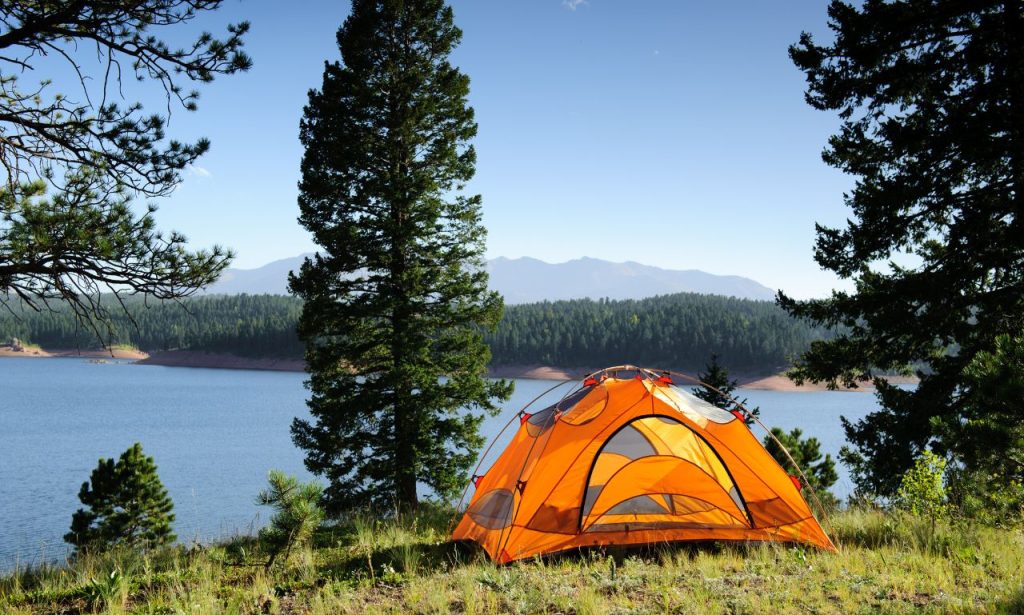Summer camping offers a unique blend of adventure and connection with nature. But as the sun climbs higher and the air grows thick with heat, your idyllic escape can quickly transform into a sweltering ordeal. The key to conquering the heat and reclaiming your comfort lies in understanding the art of keeping your tent cool, even under the most intense summer sun.
This isn’t just about surviving the heat; it’s about thriving in it. This comprehensive guide goes beyond the basics, equipping you with innovative strategies and expert insights to transform your summer camping experience. Get ready to discover how to keep a tent cool in summer and unlock the secrets to a refreshingly cool and comfortable camping adventure.
Choose the Right Tent for Hot Weather

Your tent is your sanctuary against the elements, and in the scorching summer heat, choosing the right one becomes paramount. Think of it as your personal oasis, carefully designed to deflect the sun’s relentless rays and invite cool breezes in. Here’s what to consider:
Fabric and Color:
- Go Light: Light-colored tent fabrics, like beige, tan, or yellow, reflect more sunlight than darker shades, significantly reducing heat absorption. This simple choice can mean the difference between a comfortable night’s sleep and a restless, sweat-soaked ordeal.
- Embrace Breathability: Look for tents made with breathable materials such as nylon or polyester. These fabrics allow for better air circulation, preventing that stifling, humid feeling that can build up inside a tent.
Design and Features:
- Ventilation is King: Opt for tents with multiple windows and large mesh panels. These features are crucial for promoting airflow and cross-ventilation, creating a natural cooling effect within your tent.
- Rainfly Flexibility: Choose a tent with a rainfly that can be partially or fully rolled back during the day. This allows for maximum ventilation when rain isn’t a concern, letting in cooling breezes and maximizing airflow.
- Consider a Screen Room: If your budget and campsite allow, a tent with a separate screen room can be a game-changer. This provides a shaded, bug-free area to relax and enjoy the outdoors without being directly exposed to the sun.
Select an Optimal Campsite Location
Choosing the right campsite is like choosing the right real estate: location is everything. A well-chosen spot can dramatically impact your tent’s temperature and overall comfort. Here’s how to scout out the perfect location:
Seek Out Shade:
- Natural Shade is Your Friend: Trees are nature’s air conditioners. Prioritize campsites situated under the canopy of large trees, especially deciduous trees that provide ample shade during the hottest hours of the day.
- Consider the Sun’s Path: Before pitching your tent, observe the sun’s movement throughout the day. This will help you determine the areas that receive the most shade and avoid setting up in a sun-drenched spot.
Embrace the Breeze:
- Find Higher Ground: If possible, set up camp on slightly elevated ground. Higher elevations often experience cooler temperatures and benefit from more consistent breezes.
- Avoid Enclosed Areas: Steer clear of low-lying areas or valleys. These areas tend to trap heat and humidity, making them significantly warmer than more open campsites.
Water Proximity:
- Enjoy the Cooling Effect of Water: Camping near a lake, river, or stream not only provides scenic views but also offers a natural cooling effect. The proximity to water can help moderate temperatures and create a more comfortable microclimate around your tent.
- Exercise Caution: While camping near water has its perks, be mindful of potential hazards like rising water levels, especially during periods of heavy rainfall.
Prioritize Ventilation Strategies
Ventilation is your secret weapon in the battle against summer heat. By strategically maximizing airflow within and around your tent, you can create a noticeably cooler and more comfortable living space. Here’s how to turn your tent into a breezy haven:
Maximize Natural Airflow:
- Strategic Window Placement: Keep your tent windows open whenever possible, especially during the cooler hours of the morning and evening. This allows for continuous air circulation and helps prevent heat buildup.
- Embrace Cross-Ventilation: Position your tent doors and windows in a way that encourages cross-ventilation. This involves creating a clear path for air to flow through the tent, carrying away heat and humidity.
Go Beyond the Basics:
- Create a DIY Air Duct: Boost airflow by propping one side of your rainfly up with a trekking pole or a sturdy branch. This creates an air duct effect, allowing hot air to escape and drawing in cooler air from below.
- Harness the Power of Wind: Use a portable windsock or simply tie a bandana to your tent pole to determine wind direction. Position your tent’s openings to take advantage of prevailing breezes, maximizing natural ventilation.
Incorporate Portable Fans for Added Cooling
Portable fans are a camper’s best friend when it comes to beating the heat. These compact and versatile devices provide a welcome breeze, circulating air and creating a more comfortable sleeping environment. Here’s how to maximize their cooling potential:
Choose the Right Fan for Your Needs:
- Battery-Powered Fans: Opt for fans powered by rechargeable batteries for maximum portability and convenience. Look for fans with multiple speed settings and adjustable heads to customize airflow.
- Solar-Powered Fans: If you’re camping in an area with ample sunlight, consider a solar-powered fan. These eco-friendly options harness the sun’s energy to provide cooling relief, reducing your reliance on batteries.
Strategic Fan Placement:

- Create a Cooling Cross-Breeze: Place one fan near the entrance of your tent to draw in cooler air, and position another fan near an open window to expel hot air. This creates a refreshing cross-breeze that helps regulate temperature.
- Direct Airflow Where You Need It Most: Experiment with fan placement to find the optimal spots for directing airflow towards your sleeping area. You can also use a small, portable fan inside your sleeping bag for targeted cooling.
Conclusion
Mastering the art of how to keep a tent cool in summer transforms your camping experience from a sweaty endurance test to a truly rejuvenating escape. By implementing these strategies, you’re not just combating the heat; you’re creating a comfortable haven where you can truly unwind and connect with nature. Remember, preparation is key. Pack wisely, choose your campsite strategically, and embrace the power of natural elements like shade and breezes. With a little foresight and these innovative tips, you’ll be well-equipped to enjoy the best that summer camping has to offer, without breaking a sweat.
ALSO READ: What Does a Tooth Implant Look Like?
FAQs
While you can use a regular fan, it’s important to ensure it’s compatible with your power source. Battery-powered fans are ideal for portability, while solar-powered fans are eco-friendly options for sunny locations. Ensure the fan is properly secured to prevent it from tipping over.
Safety depends on the fan type and your tent’s ventilation. Battery-powered fans with auto-shutoff timers are generally safe. However, avoid using fuel-powered generators or heaters inside your tent due to carbon monoxide risks.
Wrap your ice block or cooler packs in reflective material like aluminum foil to slow down melting. Create a DIY cooler by burying your ice chest in the ground, insulated with layers of blankets or towels.
Condensation occurs when warm, humid air meets a cooler surface. Maximize ventilation by keeping windows slightly open, even at night. Use a small, battery-powered fan to circulate air and prevent moisture buildup.
Heat exhaustion is a serious condition. Immediately move to a shaded or air-conditioned area, drink plenty of fluids, and remove excess clothing. If symptoms worsen or persist, seek medical attention immediately.




